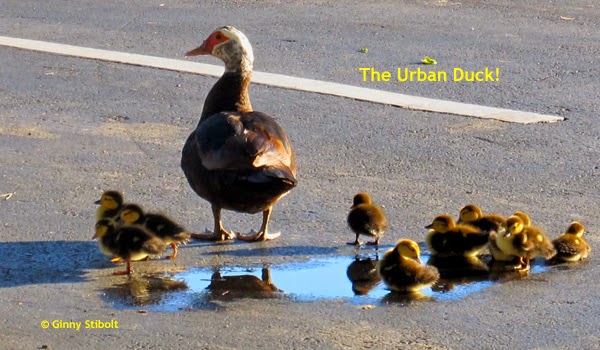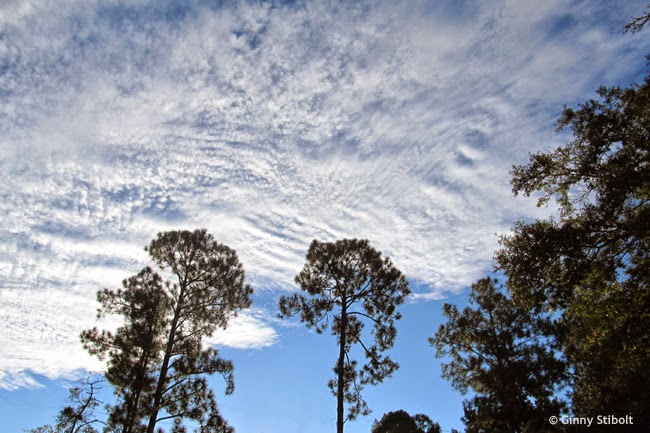 |
Gathering the berries. I used only the ones at the ends of the branches because they
are the last to ripen. |
I robbed the birds!
Many birds feast on our beautyberries (
Callicarpa americana) including mockingbirds, catbirds, and cardinals. So I felt guilty removing even one cup of their winter berry supplies, even though I have a dozen bushes plus more berries on the wax myrtles. But I saw a recipe for beautyberry cake in Peggy Lantz's new book,
Florida's Edible Wild Plants and wanted to try it. I tasted a few berries right off the bush. They were fairly bland and only slightly sweet.
 |
| It didn't take long to gather the 1 cup of berries... |
I modified Peggy's recipe to fit with the ingredients that I had on hand and added nuts and sunflower seeds to make it more of a bread.
Ingredients:
1 1/2 cups flour
1 teaspoon baking soda
2 teaspoons baking powder
1/2 cup old fashion oatmeal (Peggy used wheatgerm)
1 teaspoon vanilla
1/2 teaspoon nutmeg (Instead of the vanilla and nutmeg, she used ground ginger root)
2 eggs, beaten
1/3 cup olive oil
1/2 cup brown sugar (Peggy used honey and molasses)
1/4 cup hot water
1 cup beautyberries, washed
1/2 cup chopped walnuts
1/3 cup sunflower seeds, roasted and shelled
Preheat oven to 325 degrees and grease one 9" x 5" loaf pan. Mix the dry ingredients in a bowl, in a separate bowl mix the eggs, sugar, oil and hot water, add the liquid mixture into the dry ingredients, and then fold in the beautyberries, nuts and seeds. Pour batter into the pan and bake for 40 minutes or until the bread cracks on top.
Verdict: The bread was dark, moist, and quite tasty. Both my husband and I liked it, but neither of us could really taste beautyberries in the bread and wouldn't know they were there except for getting occasional seeds stuck in our teeth. It's sorta like carrot cake where you can't really figure out where the carrots went, but you can still count it as a serving of vegetables anyway. :-)
 |  |
| The bread is beautiful: as it should be. | Hot out of the oven, the pat of butter melts readily. For
subsequent slices, we'll zap them in the microwave for 45 seconds. |
Out and about...
 |
| A Muscovy duck and a large brood in a Chick fil-A parking lot. Hey what's in those sandwiches anyway? |
 |
| A mound of mushrooms at the foot of a live oak tree is beautiful in the morning light. |
 |
| Root beer anyone?? How's this for a catbriar tuber? We were clearing an overgrown area at the edge of the elevated drainfield for the septic system. The catbriar (Smilax ssp.) vines were as thick as my thumb, so I knew there was a tuber, but I did not expect one this big. |
 |
| The other day, the skies were filled with a wide variety of cloud types. Beautiful. |
October is supposed to be one of our 5 wet months, but the dry season has started early this year with not only no rain, but also record heat. We only received 1/2 an inch of rain early in the month and none since then. (The 30-year average rainfall in October for our area is 3.86".) Don't forget to water your winter vegetables and if you've planted new trees and shrubs this year, be sure to give them extra irrigation as we move into winter so they'll get a good start on their spring leaves.
And most important, vote green and YES to Florida's Amendment #1.
Green Gardening Matters,Ginny Stibolt






.jpg)












.jpg)
.jpg)

















.jpg)